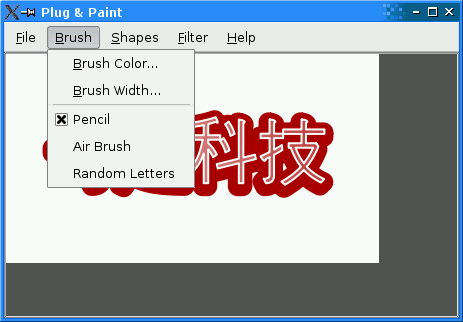
The Extra Filters example is a plugin for the 插件和描绘 example. It provides a set of filters in addition to those provided by the 基本工具 插件。
Since the approach is identical to
基本工具
, we won't review the code here. The only part of interest is the
.pro
file, since Extra Filters is a dynamic plugin (
基本工具
is linked statically into the Plug & Paint executable).
Here's the project file for building the Extra Filters plugin:
TEMPLATE = lib CONFIG += plugin QT += widgets INCLUDEPATH += ../../app HEADERS = extrafiltersplugin.h SOURCES = extrafiltersplugin.cpp TARGET = $$qtLibraryTarget(pnp_extrafilters) DESTDIR = ../../plugins
The
.pro
file differs from typical
.pro
files in many respects. First, it starts with a
TEMPLATE
entry specifying
lib
. (The default template is
app
.) It also adds
plugin
到
CONFIG
variable. This is necessary on some platforms to avoid generating symbolic links with version numbers in the file name, which is appropriate for most dynamic libraries but not for plugins.
The
INCLUDEPATH
variable sets the search paths for global headers (i.e., header files included using
#include <...>
). We add
../../app
to the list, so that we can include
<interfaces.h>
.
The
TARGET
variable specifies which name we want to give the target library. We use
pnp_
as the prefix to show that the plugin is designed to work with Plug & Paint. On Unix,
lib
is also prepended to that name. On all platforms, a platform-specific suffix is appended (e.g.,
.dll
在 Windows,
.so
在 Linux)。
The
DESTDIR
variable specifies where we want to install the plugin. We put it in Plug & Paint's
plugins
subdirectory, since that's where the application looks for dynamic plugins.
The
CONFIG()
code at the end is necessary for this example because the example is part of the Qt distribution and Qt can be configured to be built simultaneously in debug and in release modes. You don't need to for your own plugins.
文件: